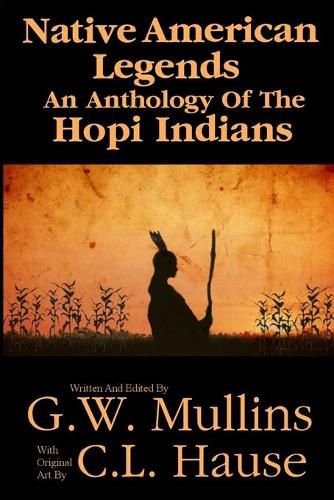Readings Newsletter
Become a Readings Member to make your shopping experience even easier.
Sign in or sign up for free!
You’re not far away from qualifying for FREE standard shipping within Australia
You’ve qualified for FREE standard shipping within Australia
The cart is loading…






This title is printed to order. This book may have been self-published. If so, we cannot guarantee the quality of the content. In the main most books will have gone through the editing process however some may not. We therefore suggest that you be aware of this before ordering this book. If in doubt check either the author or publisher’s details as we are unable to accept any returns unless they are faulty. Please contact us if you have any questions.
Native American Indian culture is known for its rich oral traditions. In many cases there were no written languages to document their histories. The tribes relied on verbal communication to share their customs, history, rituals and legends.
The tribal elders used vibrant tales to pass information to the younger generations. These stories were not only related to tribal history but were meant to entertain as well as educate, while preserving their tribal culture.
Each time an elder told a story, new life was breathed into it. The telling of the stories gave a revived meaning to the tribe’s past and their relations to the earth and the animals they had depended on for existence. In many cases when the stories were told, they were accompanied by music. Drums and rhythm were paired with dance to create a visual record.
The Hopi Indians culture was and is rich with these stories. With a past stretching back thousands of years, they are one of the oldest living cultures in documented history. The tribe’s teachings relate stories of a great flood and other events dating to ancient times. The Hopi trace their ancestry back to the Ancient Puebloan and Basketmaker cultures. They were responsible for many stone structures and artifacts of the Grand Canyon and across the Southwest. A deeply religious people, they live by the ethic of peace and goodwill.
There was a time in Hopi history that when crops were harvested, religious ceremonies had been performed, and the winter wood had been collected. It was at this time that the people broke out into dance and story-telling. It was a time of sharing a rich history. With this book, that time is now.
Included in this book, is a huge collection of the stories of the Hopi Indians. Without books and without writing the Hopi have an extensive literature. These stories have been collected with the main purpose of preserving the ancient stories of Native American life. Over the years, many collectors have recorded several versions of some of these tales. So keep in mind there is some variation to what has been collected. You are invited to enjoy the culture and as in true Native tradition, share these stories with the next generation.
$9.00 standard shipping within Australia
FREE standard shipping within Australia for orders over $100.00
Express & International shipping calculated at checkout
This title is printed to order. This book may have been self-published. If so, we cannot guarantee the quality of the content. In the main most books will have gone through the editing process however some may not. We therefore suggest that you be aware of this before ordering this book. If in doubt check either the author or publisher’s details as we are unable to accept any returns unless they are faulty. Please contact us if you have any questions.
Native American Indian culture is known for its rich oral traditions. In many cases there were no written languages to document their histories. The tribes relied on verbal communication to share their customs, history, rituals and legends.
The tribal elders used vibrant tales to pass information to the younger generations. These stories were not only related to tribal history but were meant to entertain as well as educate, while preserving their tribal culture.
Each time an elder told a story, new life was breathed into it. The telling of the stories gave a revived meaning to the tribe’s past and their relations to the earth and the animals they had depended on for existence. In many cases when the stories were told, they were accompanied by music. Drums and rhythm were paired with dance to create a visual record.
The Hopi Indians culture was and is rich with these stories. With a past stretching back thousands of years, they are one of the oldest living cultures in documented history. The tribe’s teachings relate stories of a great flood and other events dating to ancient times. The Hopi trace their ancestry back to the Ancient Puebloan and Basketmaker cultures. They were responsible for many stone structures and artifacts of the Grand Canyon and across the Southwest. A deeply religious people, they live by the ethic of peace and goodwill.
There was a time in Hopi history that when crops were harvested, religious ceremonies had been performed, and the winter wood had been collected. It was at this time that the people broke out into dance and story-telling. It was a time of sharing a rich history. With this book, that time is now.
Included in this book, is a huge collection of the stories of the Hopi Indians. Without books and without writing the Hopi have an extensive literature. These stories have been collected with the main purpose of preserving the ancient stories of Native American life. Over the years, many collectors have recorded several versions of some of these tales. So keep in mind there is some variation to what has been collected. You are invited to enjoy the culture and as in true Native tradition, share these stories with the next generation.